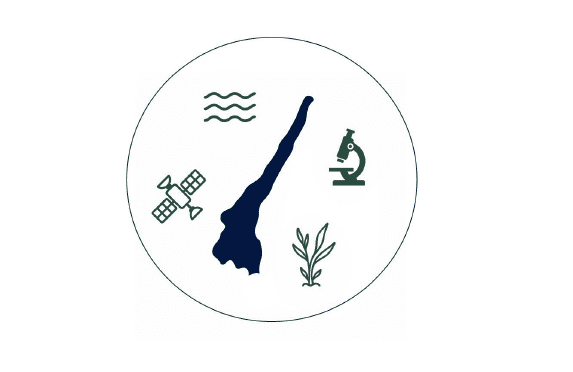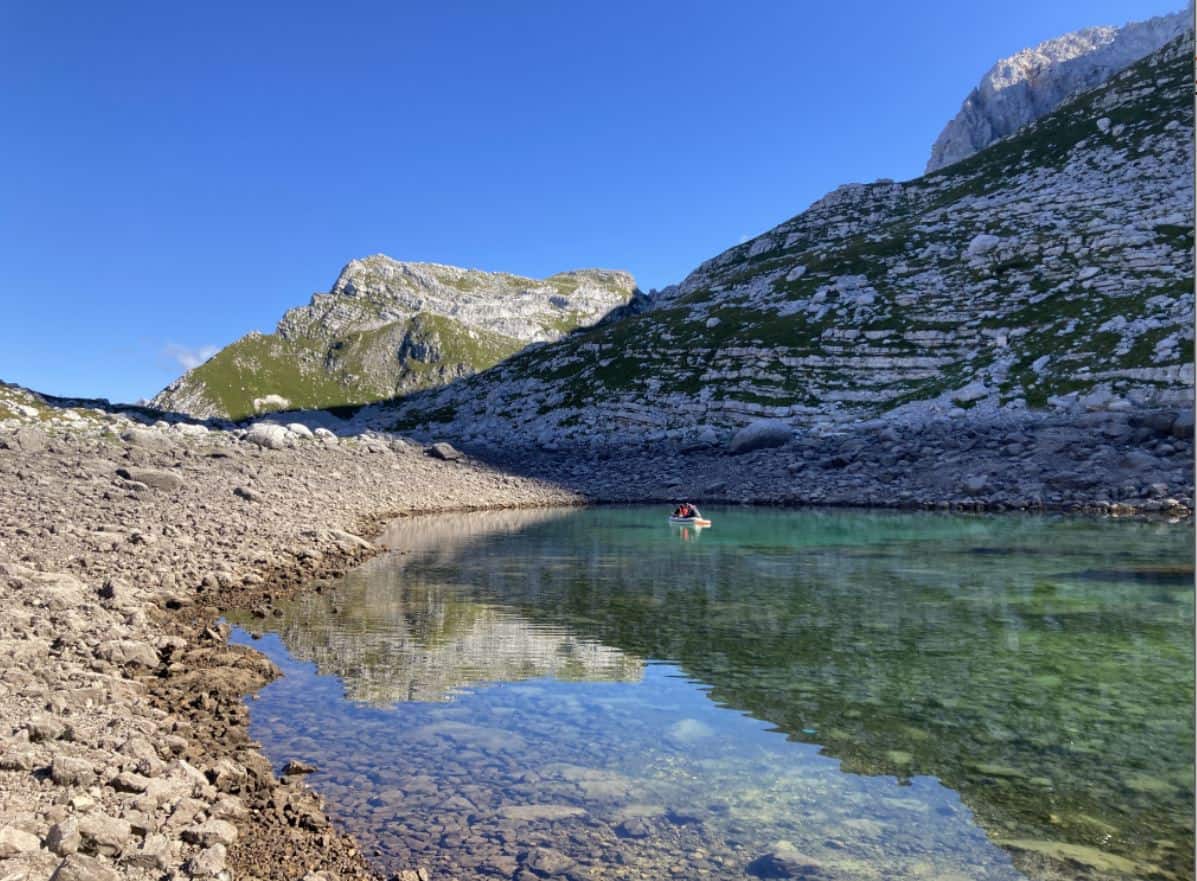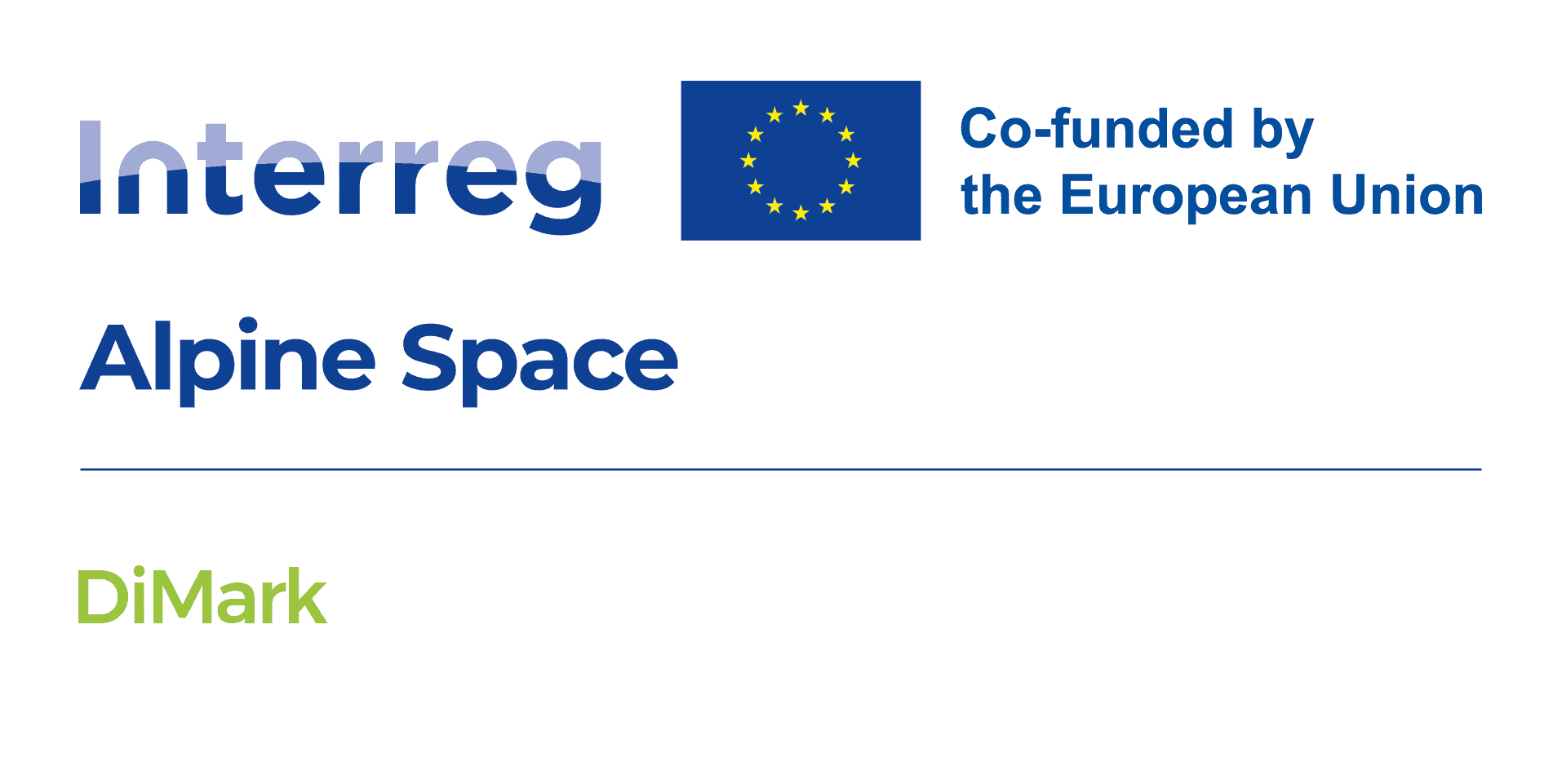
Overview
The rise in water temperatures combined with pollution will alter habitat conditions for many Alpine species. DiMark provides monitoring and early warning system solutions (by linking traditional and satellite observations) to mitigate tourism and eutrophication pressure on Alpine lakes. By creating an innovative monitoring of water quality and early warning systems, the project improves water management, as well as climate mitigation.
Factsheet
- 2021 – 2027
- Climate resilient and green Alpine region
- SO 1.1 - Promoting climate change adaptation and disaster risk prevention, resilience, taking into account eco-system based approaches
-
- AG1 Research & innovation
- AG5 Connectivity & accessibility
- AG6 Natural resources
- AG8 Risk governance
- 09/2024
- 08/2027
- 2.342.224 EUR
- 1.590.933 EUR
Description
Alpine lakes are facing anthropogenic challenges led by touristic pressures and eutrophication, worsening over time with climate change. Frequent cyanobacterial and algal blooms caused by eutrophication make waters unsuitable for drinking, recreation, and industry. Blooms are accompanied by decreased biodiversity and oxygen depletion, posing a risk to water ecosystem; cyanotoxins in blooms pose also a health risk. The challenges mentioned above can be addressed using novel satellite-based solutions and improved cooperation between academia and decisionmakers.
The project objective is to improve freshwater management, using novel ecosystem-based approaches for climate change adaptation and disaster risk prevention.
The project will develop two innovative ready-to-use solutions:
(1) an online visualisation tool with maps of the Alpine area for inspecting and comparing the water state, based on important freshwater markers, and
(2) a model for cyano-risk prevention, enabling sustainable lake management while minimising health risk.
Solutions will be developed using a multi-stakeholder co-development process, including academia, policy, SME, NGO and citizen stakeholders. The DiMark Transnational Network and Alpine lakes management strategy will enhance the sustainability of project results. The innovative aspect of the DiMark project is linking freshwater markers to satellite data. Establishing these links in a transnational approach is essential because some countries have experts for satellite data analyses, while others have experts for freshwater markers. In addition, water state depends on watersheds stretched across more countries (including border Alpine lakes). The project's main beneficiaries will be national/regional lake managers, decision makers and citizens who will experience better water quality and safety.
Main results/changes are:
(i) improved water quality,
(ii) better response in case of water disaster management and
(iii) improved lake biodiversity.
Partners
- 46.050026814.5069289
- 46.050026814.5069289
- 47.263063511.384189121260377
- 48.253337816.4839186
- 46.193405911.1339421
- 45.403362111.8846891
- 40.81925614.1827263
- 47.6592169.1750718
- 46.37313036.4779448
- 46.41779384999999515.874825928236131
- 47.40384388.6095739















Outcomes
-
Alpine meta-data set of freshwater markers
Three data series types (traditional, eDNA, and remote satellite observations) from diverse Alpine lakes will be harmonised in the form of meta-data set. This unique meta-data set of important freshwater markers (e.g. turbidity, pigments) will serve as a much-needed starting point for linking different data sets and enabling correlations inside DiMark Transnational Network for linking digital Earth observation to freshwater markers, and will be available to interested stakeholders. -
Pilot actions
DiMark project will test/validate 2 transnationally developed tools: visualisation tool (O.2.2) as well as risk model (O.2.3) within joint pilot action, which will enable co-development from tools to solutions. The partnership identified 6 key pilot lakes (2 crossborder lakes and 4 other key lakes, presenting the focal point for joint testing and stakeholder activities). In addition, in 50-100 lakes, specific aspects of tools will be tested on a larger scale considering Alpine lakes' diversity. -
Visualisation tool with maps
This solution is an online visualisation tool with maps of the Alpine area for inspecting/comparing the state of waters based on key freshwater markers. This ready-to-use solution will be co-developed; initially set by academia (D.2.2.1) and repeatedly tested by all PP (focusing on policy PP, providing valuable feedback on lake managers perspective), resulting in O2.2. Tool will support also EUSALP AG6 and AG6-led cross-cutting priority. -
Model for cyanorisk-prevention
Model for cyano risk-prevention will enable sustainable management of lakes with minimising health risk. It can be used individually or together with visual. tool (O.2.2.) for a broader understanding of lake state. Also this solution will be co-developed, initially set by academia and repeatedly tested by all PP, focusing on policy PP needs/feedback. It will contribute to EUSALP AG1 (by innovative CC adaptation measures) and AG8 (by natural hazard of cyanotoxins and their risk management). -
DiMark TRANSNATIONAL NETWORK for Linking Digital Earth Observation to Freshwater Markers
This network will be composed of lake managers, decision-makers, practitioners and academia experts to: (i) ensure validated data on Alpine lakes water quality, (ii) advise policymakers with appropriate mitigation/prevention actions addressing acute problems; e.g. eutrophication, water availability, cyanoblooms, & (iii) improve transnational science-policy communication. Runs in parallel with pilot actions (O.2.1) where all involved can voice concerns/expectations about solutions (O.2.2 & 2.3). -
Transnational strategy on using satellite-based tools for freshwater management
In the frame of DiMark Network (O.3.1), the strategy will be prepared for achieving common Alpine strategic guidance on tackling lake-related issues by using developed solutions and proposing prevention/mitigation measures (linked to EUASALP AG1, 5, 6 & 8). The strategy will also consider information exchange and a common approach to the (inter)national/regional governments and decision-makers. Letters of commitment (at least 6) will be signed by relevant parties to ensure long-term cooperation.
Pilots
-
Lake Bled
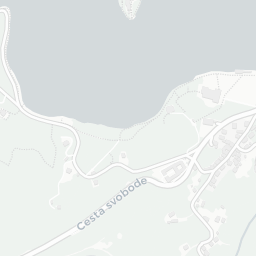





Although Lake Bled is a very small Alpine lake (1,5 km2) it is a national icon and the most important Slovenian lake for tourism. Celebrated for its stunning island, Lake Bled has seen rising environmental pressures from tourism and shoreline development.
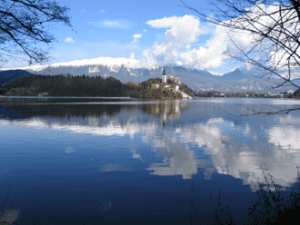
Lake Bled. (Photo: Anja Bubik)
Activities like tourism, old infrastructure and fish feeding, add to nutrient pollution, fueling potentially harmful cyanobacterial bloom. These blooms can disrupt the lake’s delicate ecosystem, turning the seemingly pristine lake water putrid brown or red. Lake Bled is the only lake in Slovenia which occasionally turns into scarlet color, all other Slovenian lakes and accumulations with cyanobacterial bloom are more greenish in color (www.ciano.si).


A dense scarlet bloom of the potentially toxic cyanobacteria Planktothrix rubescens on the lake surface. (Photo: Tina Eleršek)
To tackle these challenges, the DiMark project will study different Alpine lakes and create advanced visualization tool and model for early warning system. While being the smallest key lake in DiMark, Lake Bled is on the limit for satellite observation, but anyway, by integrating traditional techniques with satellite observations, DiMark will try to predict and mitigate the impacts of eutrophication on Lake Bled and to protect its ecological well-being for future generations.
Downloads
Project calendar
